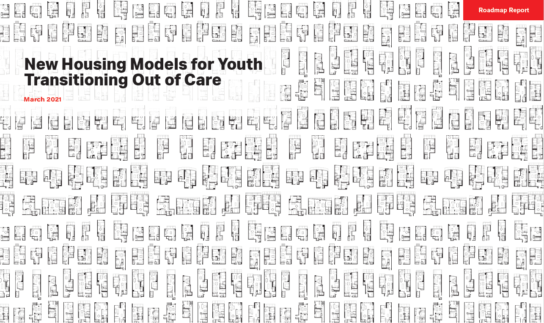Between 850 and 2000 homeless youth are reported each night in Toronto – stark numbers which undoubtedly continue to increase as a result of COVID-19, and which illustrate the pressing need for immediate housing solutions for the city’s youth.
Tackling youth homelessness, however, will require more than just providing affordable housing for youth. Innovative solutions to youth-centered design and sustainably-built communities are just as crucial.
In WoodGreen’s newly released Roadmap Report on New Housing Models for Youth Transitioning Out of Care, we provide various evidence-based recommendations to achieve these wrap-around goals.
Since 2019, WoodGreen Community Services, in collaboration with PARTISANS and PROCESS, have worked together to develop a set of key architectural design principles and solutions to inform future built-for-purpose transitional housing sites for homeless youth, with a focus on youth aging out of the child welfare system. Roughly 47% of homeless youth have experience in foster care or group homes in Canada.
Funded by the Canada Mortgage and Housing Corporation (CMHC) and guided by an advisory group of youth with lived experience and industry experts, the project team for WoodGreen’s CMHC Solutions Lab on Modeling Transitional Housing for Vulnerable Youth conducted background research, interviews and analyzed emerging trends, synthesizing key findings into seven core principles that make up the project’s Framework for Transitional Housing for Youth Aging Out of Care, including youth centered design, community engagement and finance and partnerships, to name a few.
The project also produced several housing prototypes to illustrate ways in which transitional housing can be made into short, medium and long-term ecosystems of support.
During a Roadmap Symposium virtual event held last month for the report’s launch, panelist, Nicholas Ridiculous, a youth lived experience expert and PARTISANS representative, underscored the importance of youth-led approaches to programming and design to ensure youth feel comfortable, safe and can meet their needs.
“For a lot of people, for a long time, our bodies are our homes. That’s the one consistency during a constant state of flux and transition. A place to live can be given or enforced, but a home must be consciously made”.
As the nature of partnerships for transitional housing for youth continue to evolve, panelist, Mwarigha, Vice President at Housing & Homelessness Services at WoodGreen Community Services, also believes that the richness of the project can be brought forward to support innovative financing and partnership needs.
“Allow the initiative to be the carrier - a unique opportunity for partnership”.
Finally, touching on one of the report’s key takeaways that housing is a process, not a product, panelist, Pooya Baktash, co-founder at PARTISANS Architecture Studio notes that, “we need to rethink the role of architects as not someone who only builds houses. The house is not just a living object. It is a creature, it is a process that you need to grow and become part of”.
Read the full report here.






